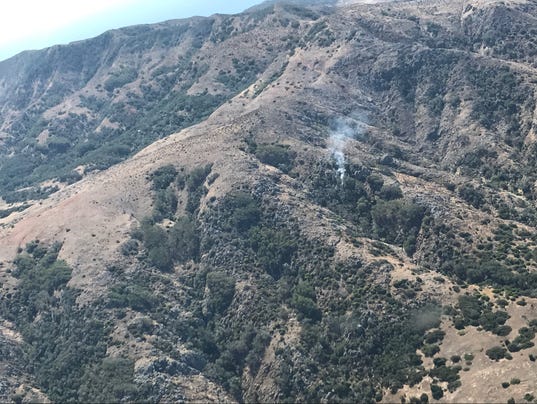What is like to visit the island fox at home? Walk along with our guest blogger - Douglas E. Welch
Island Journal - My First Visit to Santa Cruz Island
It took me over 25 years living in California to make my first visit to Santa Cruz Island. The Channel Islands have always intrigued me, but they seemed so difficult to visit.
Finally, the day arrived when our entire family boarded a boat for Santa Cruz Island. This was a trip sponsored by the Friends of the Island Fox. They took care of organizing our transport and acted as interpreters for all we hoped to see that day. The sun was shining brightly when we left Ventura Harbor, but as we got closer to the island a deep fog set in. Santa Cruz had to be out there somewhere, but we also could have been in the middle of the Pacific for all we knew. It was only by looking at my gps position on my iPhone that I knew we had to be close.
Suddenly a pier faded into view and then a shoreline and then Santa Cruz Island’s mountains. Within a few minutes, we were on dry land again and beginning our exploration of this very wild portion of California.
Because of the island’s isolation, everything looked familiar–but different. Of course, the island foxes only inhabit the Channel Island; they were completely new to me. It was amazing to see something so rare (and so darn cute) up close. They are smart, too. One fox even tried to raid a backpack while its owner napped nearby. Something you always need to be on-guard about when you visit the islands.
The flora and bird life were slightly different too. The giant coreopsis takes on huge proportions when compared to their mainland counterparts. What looked similar to a mainland scrub-jay turned out to be an island scrub-jay, also endemic to the islands. Again, familiar–but different.
For me, another unique feature of the island was the sound the cobbled rocks made as the surf washed them first onshore and then retreated. The stones rolled back and forth clinking and clunking like a stone xylophone. I watched and listen to that sound for quite a long time as we waited to board our boat home. I was amazed at its musicality.
Since this visit, I now take every opportunity to visit the Channel Islands. It is always an amazing day of unique flora and fauna and striking scenic vistas that seem to faraway, but are right here in our own backyard. - Douglas E. Welch
Other Island Journal entries:













































